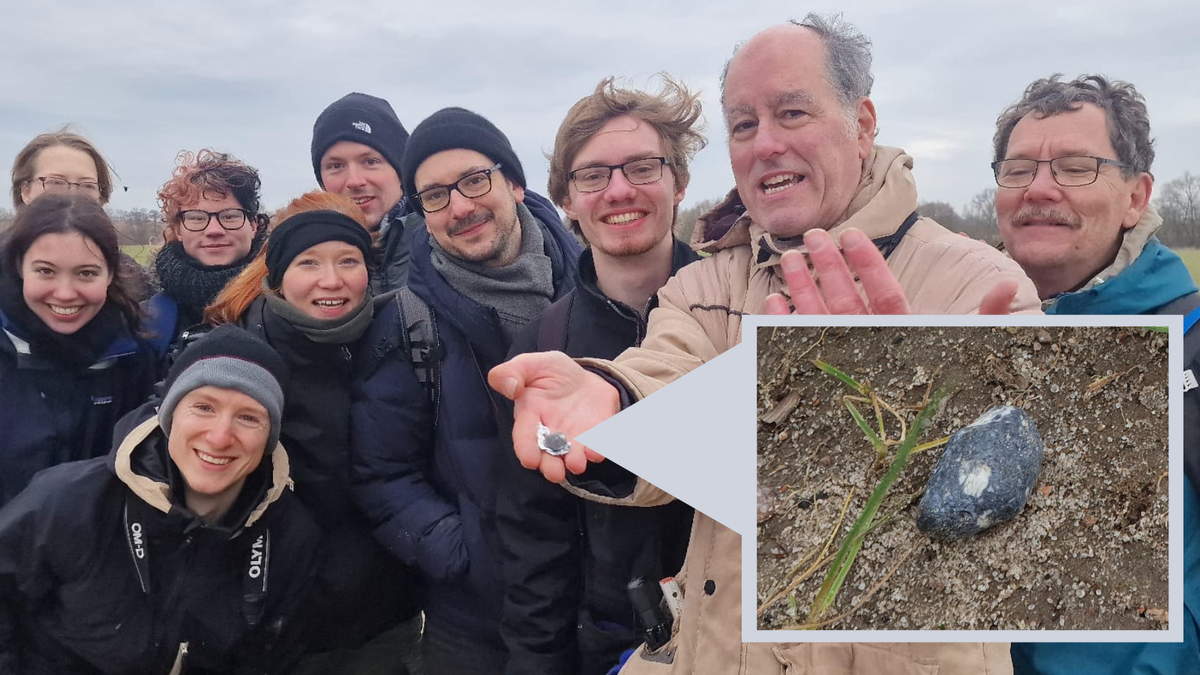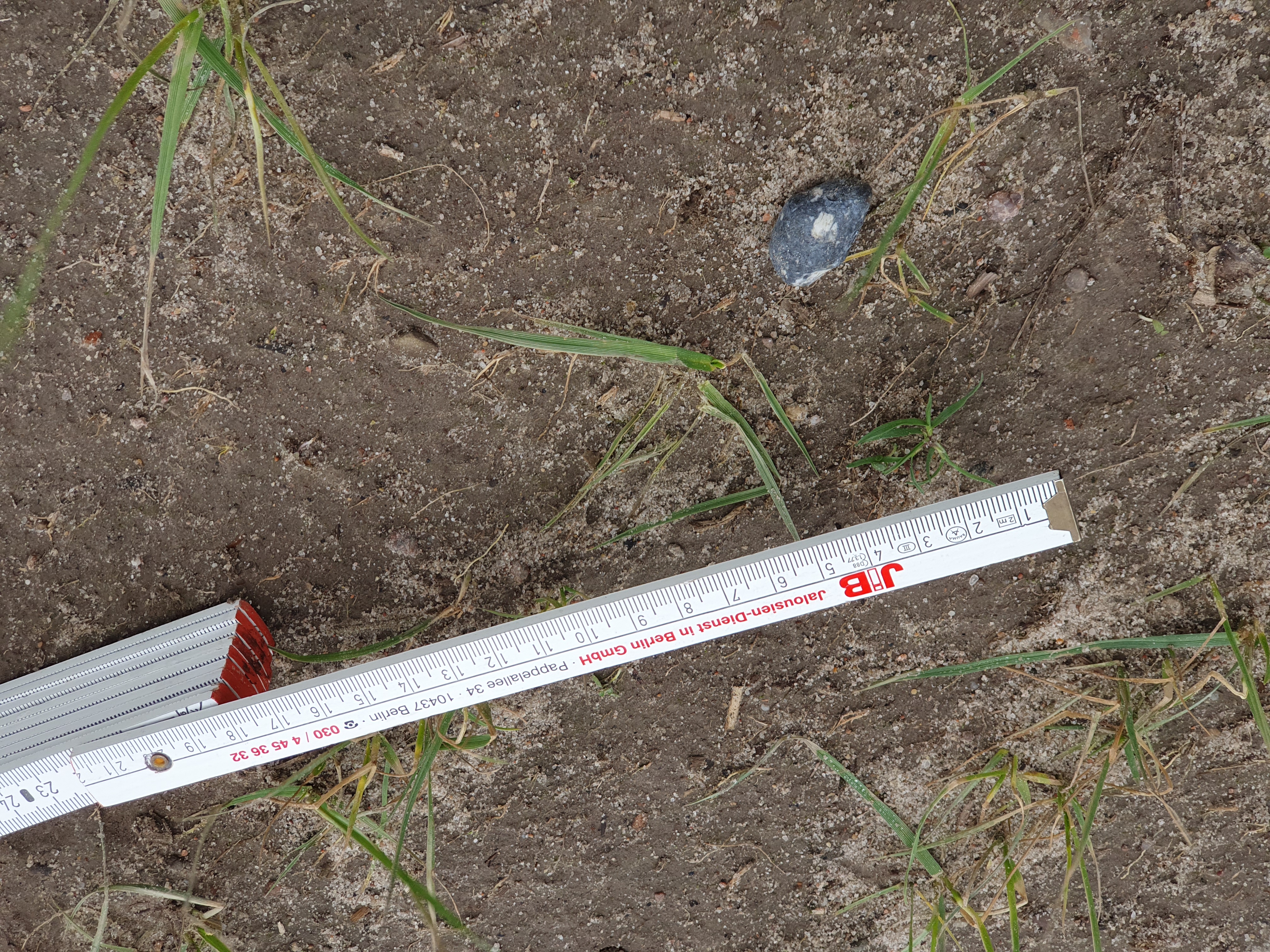
Meteorite hunters successfully recovered fragments of an asteroid that crashed into Earth over Berlin, Germany, on Sunday (Jan. 21) — and space rocks may be very rare indeed.
NASA spotted the 3.3-foot-wide (1 meter) asteroid, called 2024 BX1, about 90 minutes before it collided with Earth's atmosphere. It burned on impact and exploded, forming a fireball that was seen by observers across Europe.
In the wake of the event, on Monday (January 22), brave meteorite hunters were searching for fragments of asteroid 2024 BX1. One team that hit the dirt was led by SETI meteorite scientist Peter Jeniskens. The crew found the second and third fragments to be discovered.
“I was so relieved to find these meteorites.” Jeniskens told Space.com. “We walked dozens of kilometers on Monday, Tuesday, Wednesday and Thursday. I had an overwhelming feeling that perhaps nothing had survived this – this very aggressive fragmentation.”
The meteorites, weighing 5.3 grams and 3.1 grams respectively, were finally discovered by Freie Universitaet students Dominik Dieter and Cara Weihe at around noon local time on Friday (January 26), with the team discovering more samples on Saturday and Sunday.
Related: How did NASA expect the asteroid to crash on January 21 over Germany?
This is not Jeniskens' first meteorite search.
The SETI scientist had led similar space rock searches for meteorites that came from asteroids discovered in space before they exploded in Earth's atmosphere. In 2008, for example, he ran a meteorite-hunting expedition in Sudan, and 10 years later in Botswana. More recently, Jeniskens found himself in France with a similar goal.
Jeniskens said this particular research was particularly difficult because while meteorites are usually easy to distinguish from regular terrestrial rocks — they tend to have a dark, smooth appearance — these fragments strongly resemble terrestrial rocks.
“What we were actually looking at was very different from what most people would consider a meteorite,” he said. “If you were walking in the fields and saw a rock like this, you would pass by it.”
A formal classification of these meteorites has not yet been done, but Jeniskens hints that these specimens could be something very special. “The next big step in the research is understanding exactly what we are looking at here,” Jeneskens said.
“It's very good.”

What is special about these meteorites?
The original body of fragments found by Jeniskens and his team was part of a group of near-Earth asteroids called the “Apollo asteroids,” Dennis Vida, a postdoctoral researcher in meteor physics at Western University, told Space.com.
He added that thanks to the light reflected from its body, the asteroid 2024 BX 1 showed an apparent magnitude of 32.8, making it one of the faintest asteroids ever discovered. If the asteroid had a stony composition, Vida says the asteroid would likely weigh about 2 metric tons.
However, some assumptions, such as the asteroid's size and mass, may be incorrect, as the recovered samples appear to be a rare type of space rock, most likely obrite, according to VIDA. He added that this may mean that asteroid 2024 BX 1 was much smaller than expected, making it one of the smallest asteroids ever discovered.
“In general, for all types of meteorite, about 10 fireballs drop at least 300 grams of meteorite over an area the size of California, France or Spain,” Vida continued. “Half of them occur during the day and cannot be observed. The remaining half occur during overcast skies, leaving about two to three that are theoretically observable, and only a small fraction of which are actually found.”
“If the 2024 BX1 meteorites are confirmed to be operetta meteorites, they constitute only 1% of all known meteorites, making them very rare indeed.”
Vida also explained what scientists can learn about the now-destroyed asteroid 2024 BX 1 from these fragments, considering how each type of meteorite comes from a specific location in the solar system and has a unique history.
“Currently, there is no agreed upon origin for the operetta, and several candidates have been put forward: the Nyssa asteroid family, asteroid 3103 Eiger, and even the planet Mercury,” Vida said. “With this being a new fall, allowing for rapid laboratory analysis and such a precise orbit, I am confident that this rock will bring us one step closer to understanding the origin of the operetta and help piece together the story of the formation of the solar system.”

“Web maven. Infuriatingly humble beer geek. Bacon fanatic. Typical creator. Music expert.”





More Stories
Scientists confirm that monkeys do not have time to write Shakespeare: ScienceAlert
SpaceX launches 23 Starlink satellites from Florida (video and photos)
A new 3D map reveals strange, glowing filaments surrounding the supernova